When most gearheads hear the words “Kei car,” a certain type of vehicle comes to mind. Kei regulations, created by the Japanese government in the years after World War II, were meant to promote personal car ownership to stimulate the country’s economy. The category put restrictions on things like overall dimensions, engine size, and even power output. In exchange, owners benefited from lower insurance premiums, tax rates, and more lax parking requirements.
Most Kei cars are hatchbacks, vans, or pickup trucks, used by people in Japan (and increasingly, America) to run errands, operate businesses, or commute—you know, normal car stuff. But throughout the history of the Kei car, there have been a few real-deal sports cars built to fit within the Kei rules. You’ve probably heard of the most popular models—the Honda Beat, the Autozam AZ-1, and the Suzuki Cappuccino—since they’re now legal for import in the United States and relatively affordable.
![]()
![]()
The Kei sports car craze began to die off in the early 1990s once Japan’s economy crashed, and people didn’t have as much money to blow on barely usable sports cars with two seats and next to zero storage space. But against all odds, Daihatsu, a subsidiary of Toyota, decided to launch a Kei sports car of its own in 2002: The Copen, a front-engine, front-wheel drive two-seater convertible with an instantly recognizable smile.
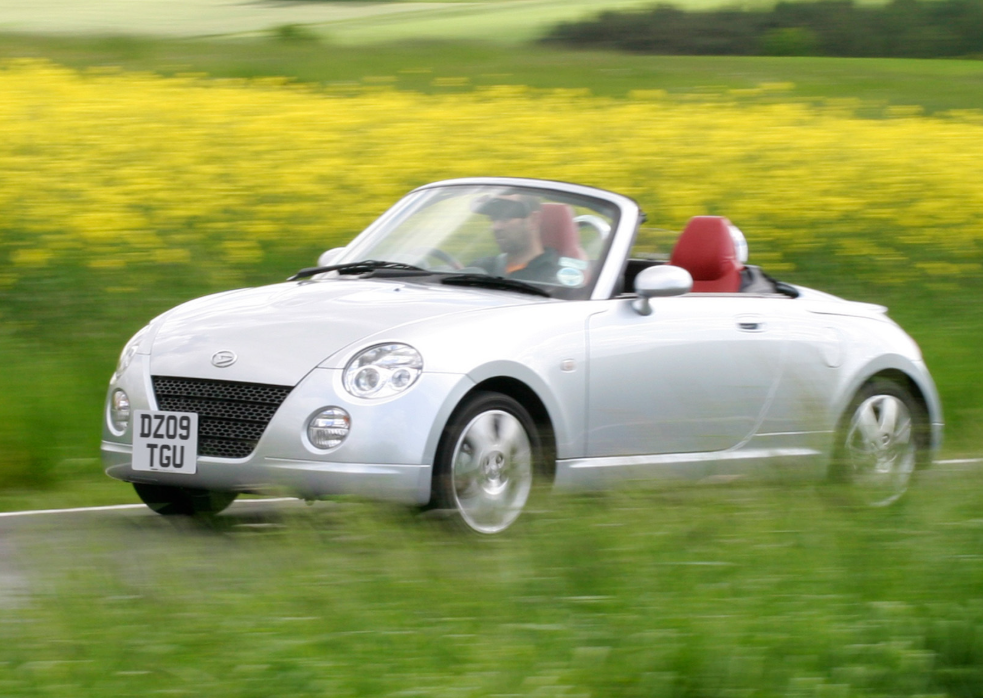 How could you not love this thing? Source: Daihatsu
How could you not love this thing? Source: Daihatsu
Though it doesn’t have the mid-engine layout of the Beat or the AZ-1, or the rear-drive purity of the Cappuccino, the Copen is still one of the coolest JDM cars around. It sold me on looks alone when I first learned about it in the early 2010s; those insect-ish eyes feel like a mash between a new Beetle, a Porsche 911, and a TVR Cerbera. The rear, meanwhile, sort of harkens back to the limited-production Tommykaira ZZ, a different kind of obscure Japanese sports car.
The Copen’s party trick is its power-folding hardtop, a world-first for “mini vehicles” upon its 2002 debut, according to Daihatsu. It’s a two-piece unit that folds under a lifting trunk piece like so:
Like all Kei cars, the Copen’s engine size was limited to 660 cubic centimeters in Japan. It was sold with a turbocharged inline-four domestically, but got a bigger 1.3-liter naturally aspirated four-cylinder in other markets like the United Kingdom as an option. Buyers could choose between a five-speed manual or a four-speed auto. In a review of the 2003 model on Top Gear, James May called it “rather good,” despite criticizing its high starting price and harsh ride.
Daihatsu briefly killed off the Copen in 2013 before resurrecting it the next year with an entirely new look and chassis. It retained the same drivetrain layout and power hard top, but got a new turbocharged inline-three engine. As with all prior model years, it was rated at 63 horsepower to stick to Kei regulations. The second-gen Copen also got something Daihatsu called the “D-Frame,” which, according to CarThrottle, brought more rigidity and safety improvements.
The second-generation Copen launched with two variants to choose from, the standard Robe and the plastic-clad, crossover-looking X Model, described by Daihatsu as expressing “a sensation of a new genre and liveliness.” I’d just describe it as weird:
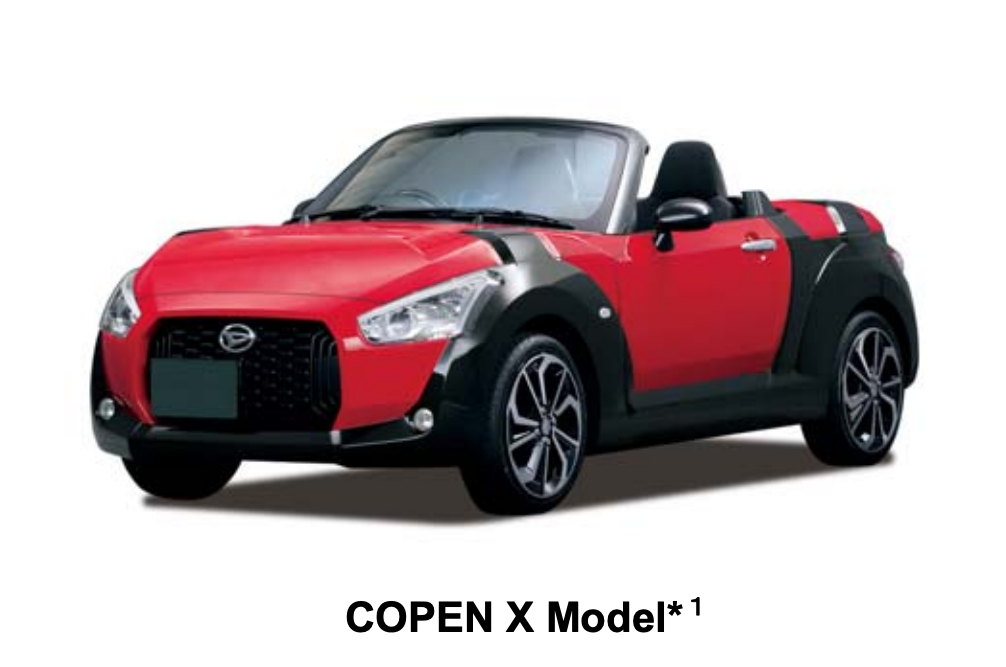 Source: Daihatsu
Source: Daihatsu
A year later, Daihatsu launched a third design called the Cero, with a softer fascia and round headlights, harkening back to the original model. The company did this, according to its announcement, to show off the Copen’s changeable exterior and interior components, suggesting an owner could swap out their Copen Robe body panels for the Cero’s should they prefer that look. For 350,000 yen (just under $3,000 at the time), you could even pay Toyota to perform the swap for you.
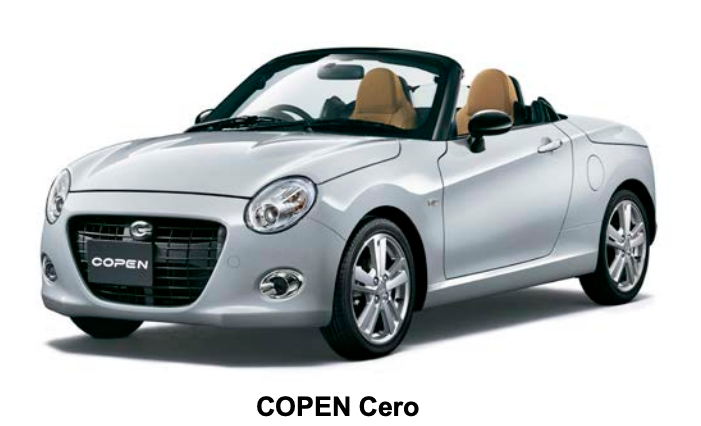 The Copen Cero. Source: Daihatsu
The Copen Cero. Source: Daihatsu
Then, in 2019, Daihatsu launched the coolest Copen yet: The GR Sport. Not only did the car get a cool fascia inspired by Toyota’s GR models, but it also got a host of real mechanical upgrades. From the release:
Compared to existing models, the GR SPORT features increased body rigidity, achieved by adding reinforcing materials to the underbody and adjusting its shape; this reduces body torsion and results in a smooth and stable ride. By optimizing its suspension, and by adopting parts that enhance aerodynamics, the car boasts improved nimbleness and stability.
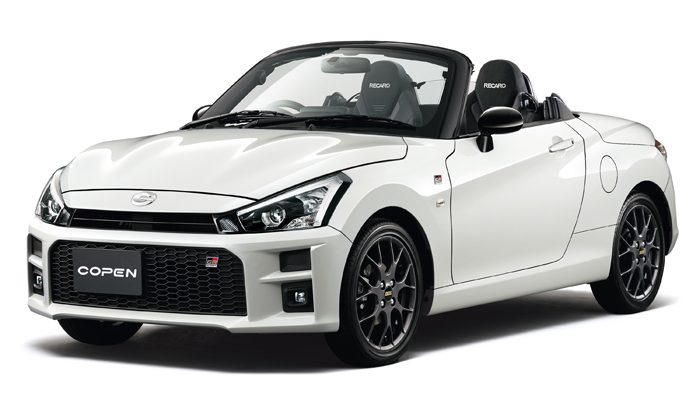 Look at those Recaros! Source: Daihatsu
Look at those Recaros! Source: Daihatsu
The Copen has lasted for 23 years, surviving through a worldwide economic recession and a worldwide pandemic. It’s the last Kei-style sports car on the market, beating out even the Honda S660, a mid-engine convertible built from 2015 to 2022. But in August 2026, it’ll end production. Daihatsu made the announcement earlier today, revealing plans to throw a Copen-themed event in Japan to send off the model to the great junkyard in the sky. The company’s even made a website dedicated to the event, which has yet to nail down a date or location.
The door isn’t totally shut on a new version, according to Daihatsu. The company says it’s “continuing various research to bring the Copen back to the market,” though it doesn’t go into any specifics. With real-deal, platform-specific sports cars becoming tougher for companies to justify, I’d be surprised if it ever makes a return (as much as I’d want it to). That leaves me with 10 months to gain Japanese residency and get my name in the order books.
Support our mission of championing car culture by becoming an Official Autopian Member.

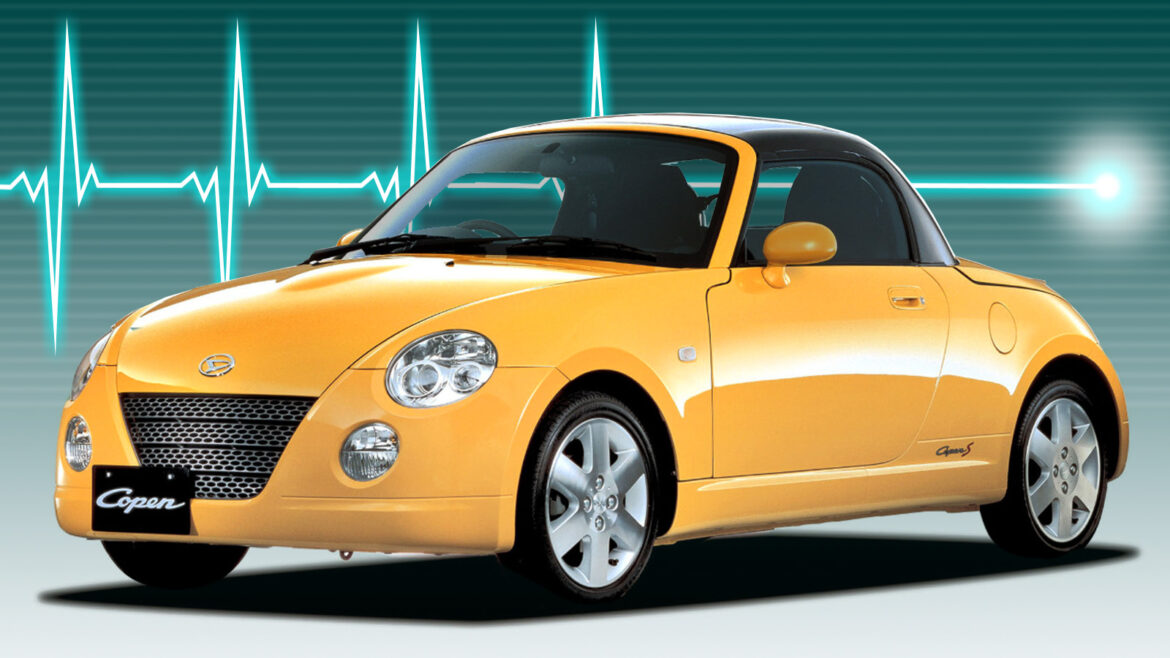
AloJapan.com